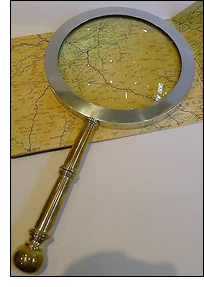featured item
Antique Maps
Posted by Gill Jones on 04/11/2013
 Karl Jennings the famous American game show host once said that even before you understood them, your brain was drawn to maps. Maps are fascinating pieces of information, especially old ones, giving a unique glimpse of the land we know now as it once was.
Karl Jennings the famous American game show host once said that even before you understood them, your brain was drawn to maps. Maps are fascinating pieces of information, especially old ones, giving a unique glimpse of the land we know now as it once was.
Maps go back a long way, 5,000 years in fact to the time when they were far more simple affairs, showing the most important aspects of an area such as a city, a trade route or a military campaign. Unlike later maps they did not have the same intricate structure, there was no north sign at the top and they weren’t always accurate, showing denser features of land at the centre and less at the edges.
Old maps were more like iconographic images of land than accurate references to parts of the landscape. They were to be admired rather than taken seriously, as you were unlikely to find where you needed to go by following a map. They were usually made by hand and were very expensive to make and were admired for their artistry rather than their accuracy.
Before Christ, rudimentary sketches were made on clay tablets and Egyptians took things further by creating more extensive and detailed maps, while the Chinese created theirs on silk. Ptolemy a geographer, mathematician and astronomer took maps to a whole new level by creating various sophisticated maps of different parts of the world with detailed references using longitude and latitudinal lines. This had a great impact on maps and would revolutionise the way maps would be made in Europe. Mathematical rules in map making led to more accurate creations that had been made so far.
Eastern influences also had their impact with the Arab scholar Al-Idrisi who wrote many books and produced many accurate maps; he would have a major impact throughout the Middle Ages on map making across the world.
When you’re looking for a map you must consider carefully how to preserve your find. Keep them away from strong sunlight and too hot or cold conditions as these two things could have a detrimental impact on your maps and cause irreparable damage.
On www.antiques.co.uk this week there are some beautiful maps, one such example is the antique map of Devonshire made by one of England’s most famous map makers Thomas Kitchin, it contains the Arms of Exeter, a compass and a reference key with some exquisite artwork in the top right hand corner.
Secondly, we have a hand coloured engraved map of a part of West Yorkshire by John Cary the engraver, there’s no date, but Cary lived between 1754 and 1835 so it dates back to the 19th century.
If you’re an avid map collector then perhaps the late Victorian oak and ash map cabinet dating back to the 19th century is for you. A magnificent piece with glazed doors and 4 sections, your maps would fit well in this beautifully built map cabinet.
Finally, to see your maps, perhaps a rare antique English mammoth map magnifying glass from the early 1900s, a beautiful piece that would really bring the details of any map into view perfectly.
We’ve moved on a lot since the early days of map making with more sophisticated methods using modern satellite systems and surveying techniques which makes for far more precise mapping. Naturally of course, today’s maps are far more reliable. You can find your way with today’s maps, but they will never have the iconography and artistry of older maps.





